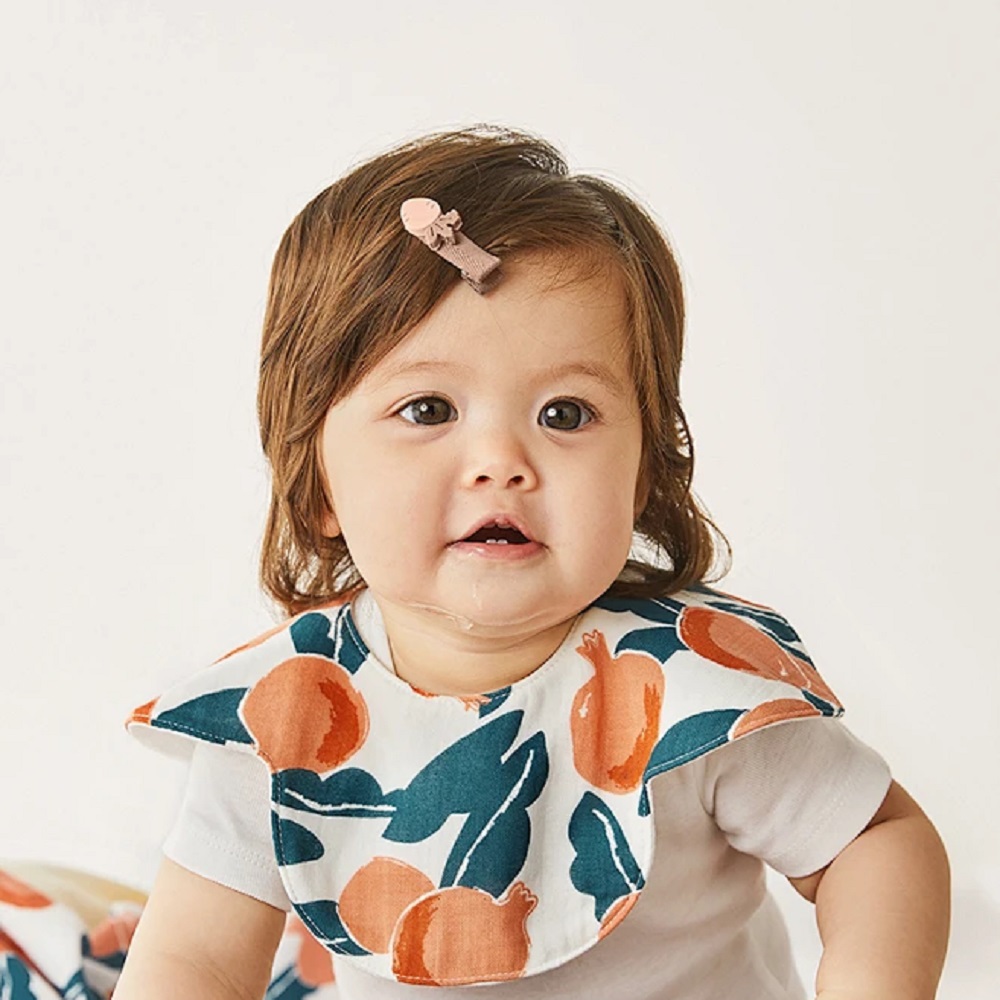How to Pick Baby Bibs for Newborns and Infants
Imagine this: your newborn is happily gurgling after a feeding, only to suddenly spit up and soak their onesie. Or maybe your infant is tasting mashed peas for the first time, gleefully flinging bits of food onto their clothes. These messy moments are part of parenthood, but the right baby bib can save the day. Choosing the perfect bib for your newborn or infant is very important. This guide will walk you through the types of bibs, key factors to consider, and some practical advice to make mealtimes (and drooling) stress-free for parents, carers, or anyone buying a baby gift.
Why Baby Bibs Are Essential for Newborns and Infants
Newborns often spit up after feedings or drool excessively during teething, and infants sometimes make a mess when starting solids. Bibs can protect clothing, reduce laundry loads, and keep your baby clean and comfortable. For newborns, softness and absorbency are key to handle frequent spit-ups. For infants, durability becomes critical as they explore foods and make bigger messes.
Types of Baby Bibs Available
Not all bibs are created equal. Here’s a look at the main types to help you choose:
Traditional Cloth Bibs: Made from soft materials like cotton or terry cloth, these are ideal for everyday use. They’re absorbent and eco-friendly but require regular washing.
Waterproof/Silicone Bibs: Perfect for messy eaters, these bibs are easy to wipe clean and durable. However, they may feel less soft and absorb less liquid.
Disposable Bibs: Great for travel or on-the-go use, these are convenient but less sustainable and may not be as comfortable.
Bandana/Scarf Bibs: Stylish and lightweight, these are best for drooling babies but offer limited coverage for meals.
Pocket/Catcher Bibs: Designed with a pouch to catch crumbs, these are excellent for infants starting solids, though they can be bulkier.
Key Factors to Consider When Picking Baby Bibs
Choosing the right bib involves balancing several factors:
Material: Opt for hypoallergenic, BPA-free options. Organic cotton or bamboo is great for absorbency, while silicone offers waterproofing for messy meals.
Size and Fit: Look for adjustable snaps or velcro to accommodate growth, ensuring coverage from neck to chest.
Absorbency and Waterproofing: Newborns need multi-layered, absorbent fabrics; infants benefit from waterproof-backed bibs for solids.
Ease of Cleaning: Machine-washable bibs save time, while wipeable silicone ones are quick for busy parents.
Safety Features: Ensure no small parts or loose buttons pose choking risks. Secure closures are a must.
Design and Style: Fun patterns engage babies, and gender-neutral designs offer versatility.
Budget and Quantity: Consider how often you’ll use bibs and balance cost with quality to meet your needs.
Eco-Friendliness: Choose sustainable materials like organic cotton or bamboo to reduce environmental impact.
Step-by-Step Guide to Choosing the Right Bib
Follow these steps to find the perfect bib:
Assess Your Baby’s Age and Needs: Newborns need soft, absorbent bibs for spit-ups; infants require durable options for solids.
Evaluate Lifestyle: Consider whether you need bibs for home, travel, or daycare settings.
Read Reviews and Check Certifications: Look for safety certifications like Oeko-Tex to ensure non-toxic materials.
Test for Comfort: Check for soft edges and no skin irritation.
Top Product Recommendations
Here are some top picks to suit different budgets and needs:
Bamboo Cotton Jersey Bib: Soft, breathable, and eco-friendly, perfect for newborns with sensitive skin. Ideal for daily drool and spit-up protection. (Pros: hypoallergenic, highly absorbent. Cons: requires washing)
Bamboo Cotton Muslin Bib: Lightweight and skin-friendly, great for teething babies (Pros: sustainable, soft. Cons: less effective for heavy messes)
Organic Cotton Bandana Bib: Stylish and absorbent, designed for drooling newborns. Perfect for adding a chic touch to outfits. (Pros: trendy designs, machine-washable. Cons: limited meal coverage)
Cotton Terry Cloth Bib: Highly absorbent for frequent spit-ups. (Pros: soft, durable. Cons: needs frequent washing)
Common Mistakes to Avoid
Buying Too Few: Babies go through bibs quickly, so stock up to avoid constant laundry.
Ignoring Material Allergies: Non-organic materials may irritate sensitive skin.
Overlooking Adjustability: Non-adjustable bibs won’t fit as your baby grows.
Focusing Only on Looks: Prioritize function over fashion for practical use.
Tips for Using and Maintaining Baby Bibs
Daily Use: Rotate bibs during feedings and playtime to keep them fresh.
Cleaning Hacks: Pre-treat stains with mild detergent and air-dry to maintain shape.
Storage Ideas: Use hooks or a dedicated drawer for easy access.
When to Replace: Swap out bibs showing fraying or reduced absorbency.
Conclusion
Choosing the right baby bibs makes parenting easier, keeping your little one clean and comfortable while reducing your workload. By considering material, fit, and functionality, you can find bibs that suit your baby’s needs and your lifestyle. As one of the trusted newborn clothes manufacturers, Mk-kids can help you produce baby bibs just the way you want.
High-quality materials – We use safe, soft, and durable fabrics suitable for infants and newborns.
Custom design & printing – Support for personalized patterns, logos, and packaging to match your brand.
Flexible order quantities – From small batches to large-scale production, tailored to your needs.
Strict quality control – Every product is tested to meet international safety and quality standards.
Reliable delivery – On-time production and global shipping support your business schedule.
If you have any questions, please don’t hesitate to contact us.
 +1 5618168645
+1 5618168645

 Admin
Admin




 No. 888 ZhuJiaWan Street, Gusu District, Suzhou City, Jiangsu Province, China
No. 888 ZhuJiaWan Street, Gusu District, Suzhou City, Jiangsu Province, China